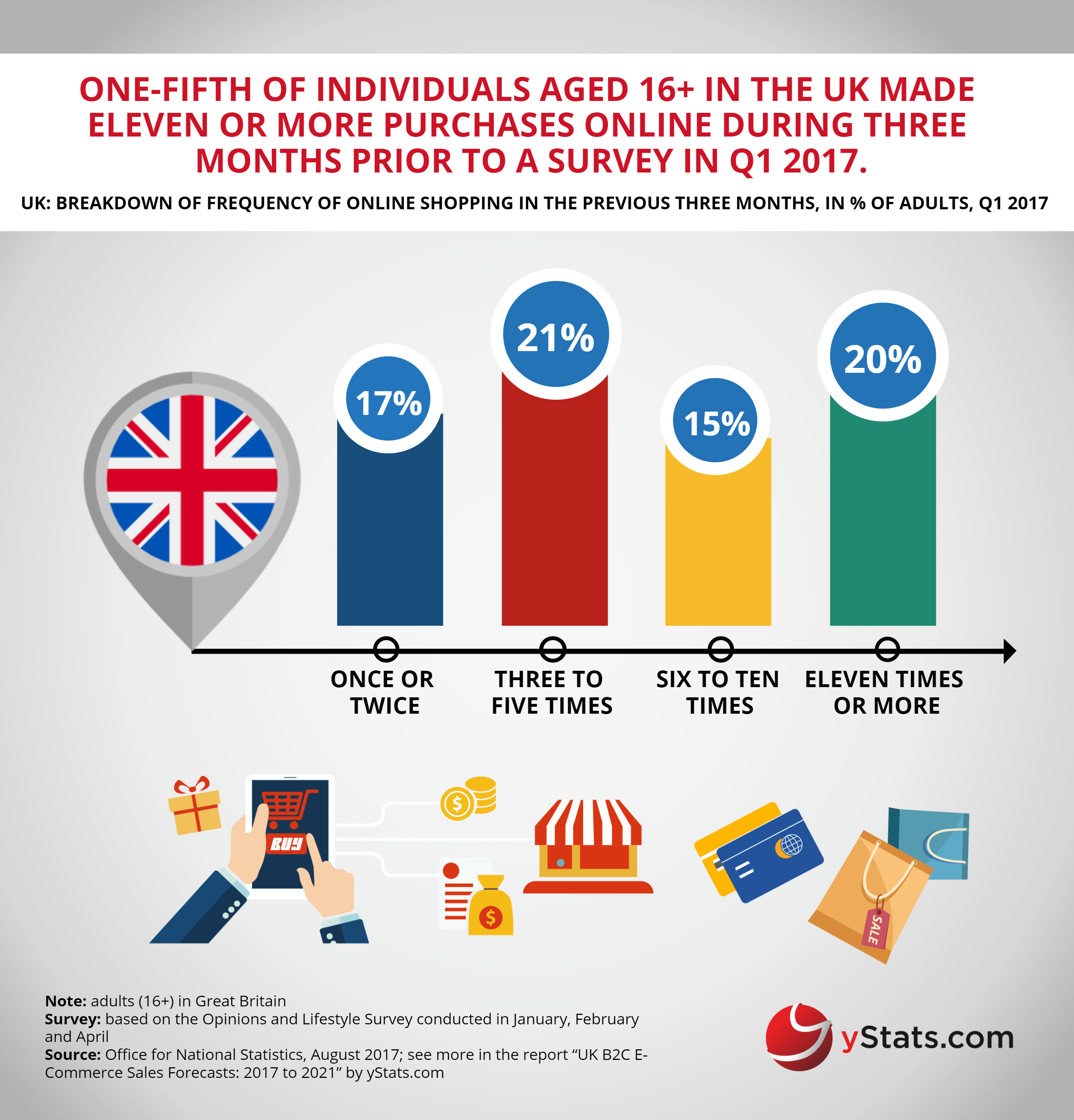According to a new study from yStats.com, a leading secondary market research firm based in Hamburg, Germany, the growth rate of B2C E-Commerce sales in the UK in the next five years is projected to slow. The report, titled “UK B2C E-Commerce Sales: 2017 to 2021” cites several original sources that predict a compound annual growth rate of below 10% through 2021. The main reason for moderation of growth is the UK market reaching an advanced stage of online retail development, with E-Commerce penetration high above Europe’s and global averages.
The UK is one of the largest and the most advanced B2C E-Commerce markets in Europe and worldwide. More than three-quarters of the adult population already shop online, purchasing a wide range of product categories from groceries to clothing. The country’s top 10 E-Commerce market players, led by Amazon and Tesco, each generate online sales of more than 1 billion pounds per year, according to a ranking cited in the yStats.com report. B2C E-Commerce already accounts for a double-digit share of total retail sales in the country, and is projected to approach at least one-fifth in the next five years.
With the popularity of online shopping thus already high, most original sources cited in the yStats.com report expect moderation of the growth pace. Through 2021, the E-Commerce market in the UK is projected to see a compound annual growth rate of below 10%. According to some forecasts, the year-on-year percentage increase in online sales in 2021 could be about half of 2017’s rate, when it was still in double-digits. Nevertheless, the rapid rise of shopping trends such as M-Commerce and click-and-collect, combined with retailer investment into new technologies including virtual reality and chatbots, could secure solid growth of Internet retail at a rate much higher than pure store-based retail. At the end of the forecast period, the UK is expected to lose a percentage point in global E-Commerce sales due to a more rapid expansion of emerging economies, but strengthen its leadership in Western Europe with a share of around one-third of total online retail in the region.



